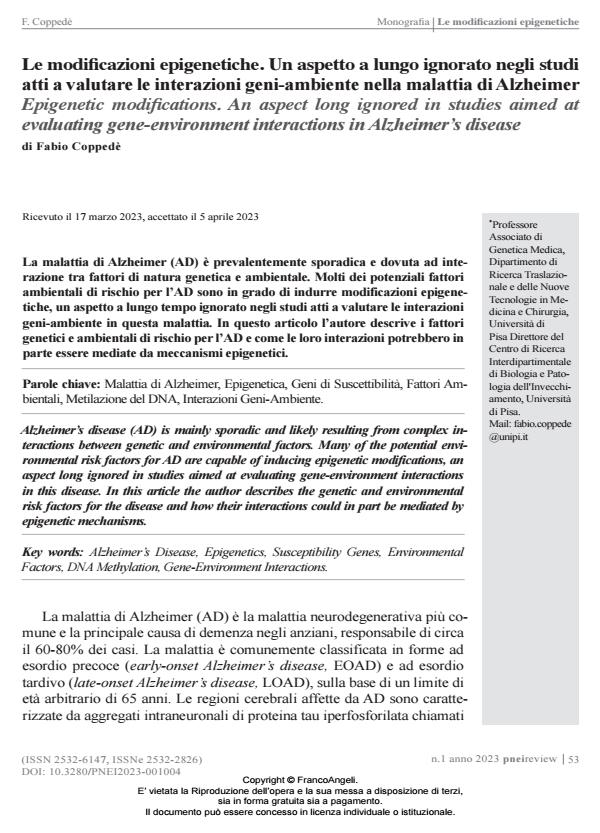Le modifi cazioni epigenetiche. Un aspetto a lungo ignorato negli studi atti a valutare le interazioni geni-ambiente nella malattia di Alzheimer
Titolo Rivista PNEI REVIEW
Autori/Curatori Fabio Coppedè
Anno di pubblicazione 2023 Fascicolo 2023/1
Lingua Italiano Numero pagine 15 P. 53-67 Dimensione file 1124 KB
DOI 10.3280/PNEI2023-001004
Il DOI è il codice a barre della proprietà intellettuale: per saperne di più
clicca qui
Qui sotto puoi vedere in anteprima la prima pagina di questo articolo.
Se questo articolo ti interessa, lo puoi acquistare (e scaricare in formato pdf) seguendo le facili indicazioni per acquistare il download credit. Acquista Download Credits per scaricare questo Articolo in formato PDF

FrancoAngeli è membro della Publishers International Linking Association, Inc (PILA)associazione indipendente e non profit per facilitare (attraverso i servizi tecnologici implementati da CrossRef.org) l’accesso degli studiosi ai contenuti digitali nelle pubblicazioni professionali e scientifiche
La malattia di Alzheimer (AD) è prevalentemente sporadica e dovuta ad inte- razione tra fattori di natura genetica e ambientale. Molti dei potenziali fattori ambientali di rischio per l’AD sono in grado di indurre modificazioni epigene tiche, un aspetto a lungo tempo ignorato negli studi atti a valutare le interazioni geni-ambiente in questa malattia. In questo articolo l’autore descrive i fattori genetici e ambientali di rischio per l’AD e come le loro interazioni potrebbero in parte essere mediate da meccanismi epigenetici
Parole chiave:Malattia di Alzheimer, Epigenetica, Geni di Suscettibilità, Fattori Am- bientali, Metilazione del DNA, Interazioni Geni-Ambiente.
Fabio Coppedè, Le modifi cazioni epigenetiche. Un aspetto a lungo ignorato negli studi atti a valutare le interazioni geni-ambiente nella malattia di Alzheimer in "PNEI REVIEW" 1/2023, pp 53-67, DOI: 10.3280/PNEI2023-001004